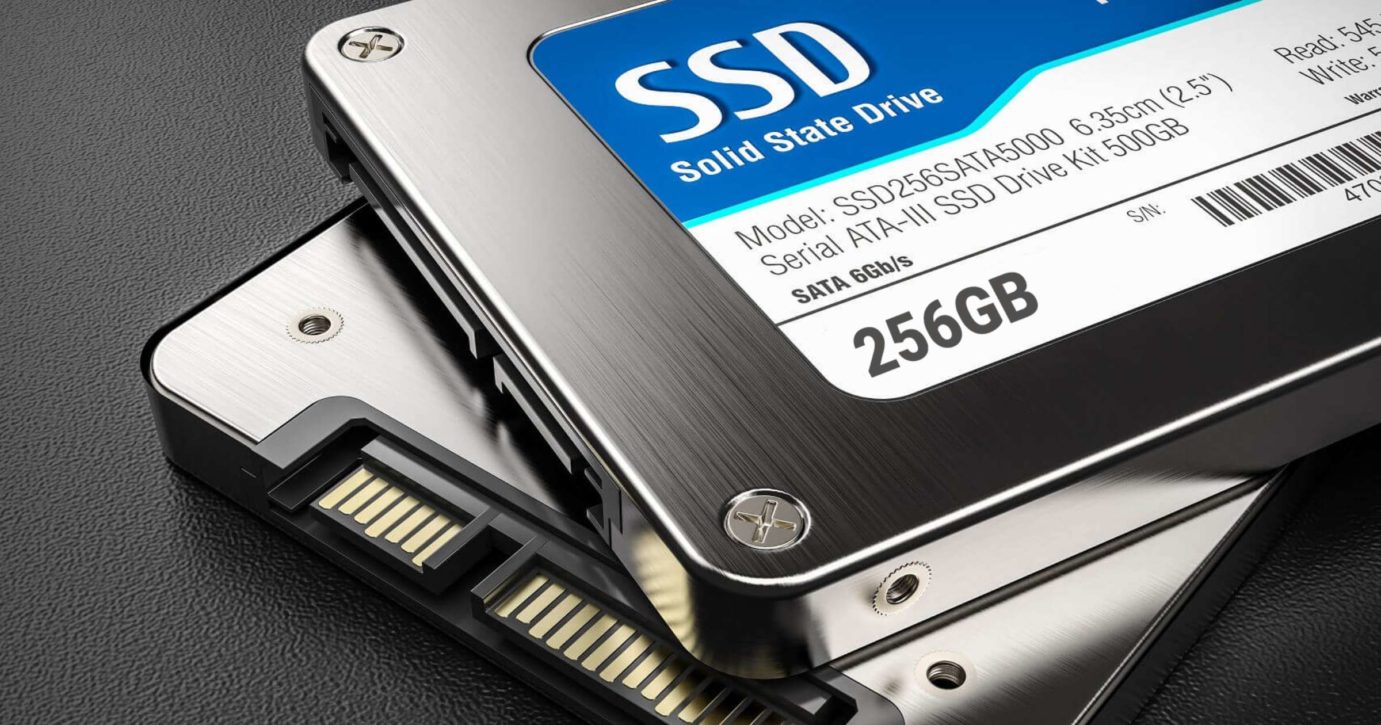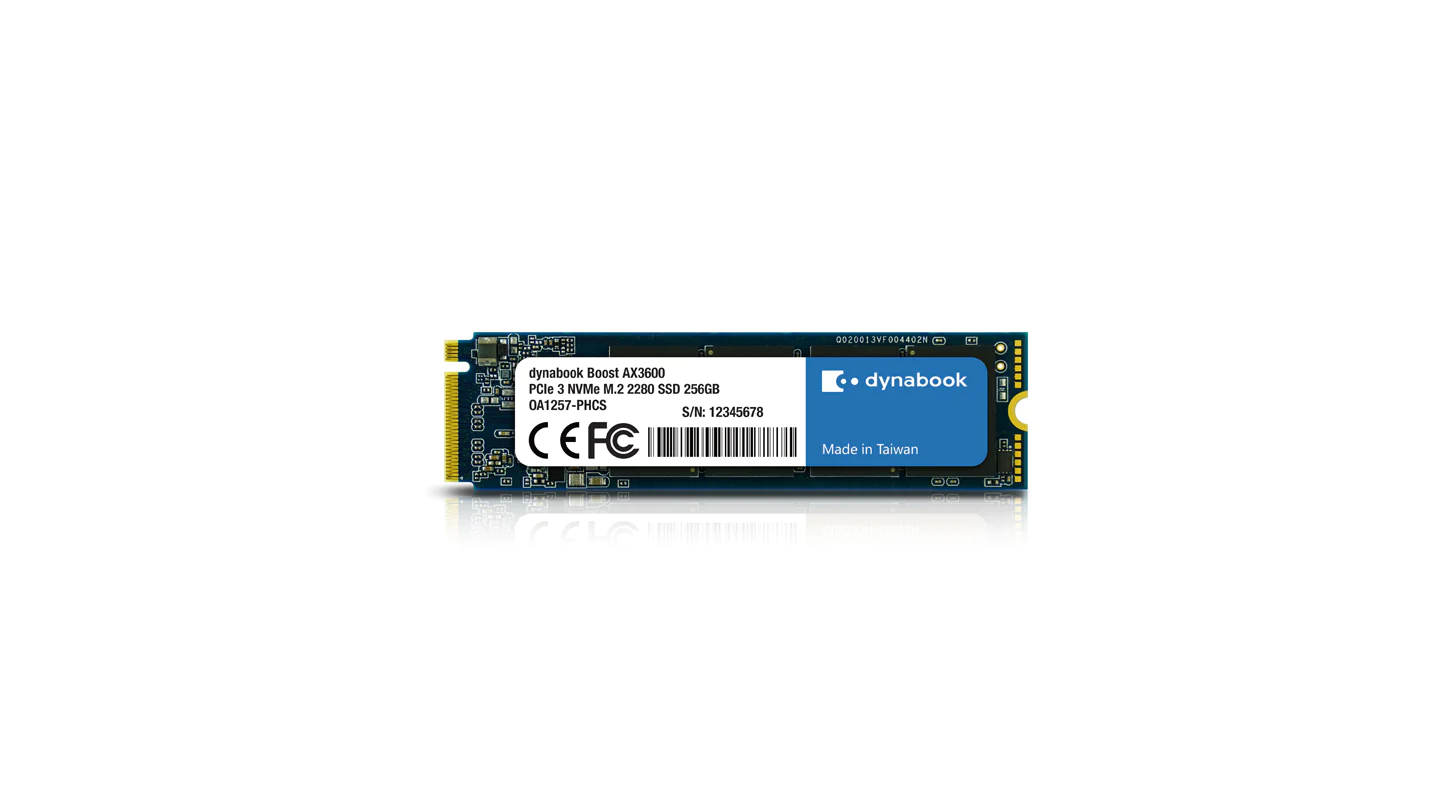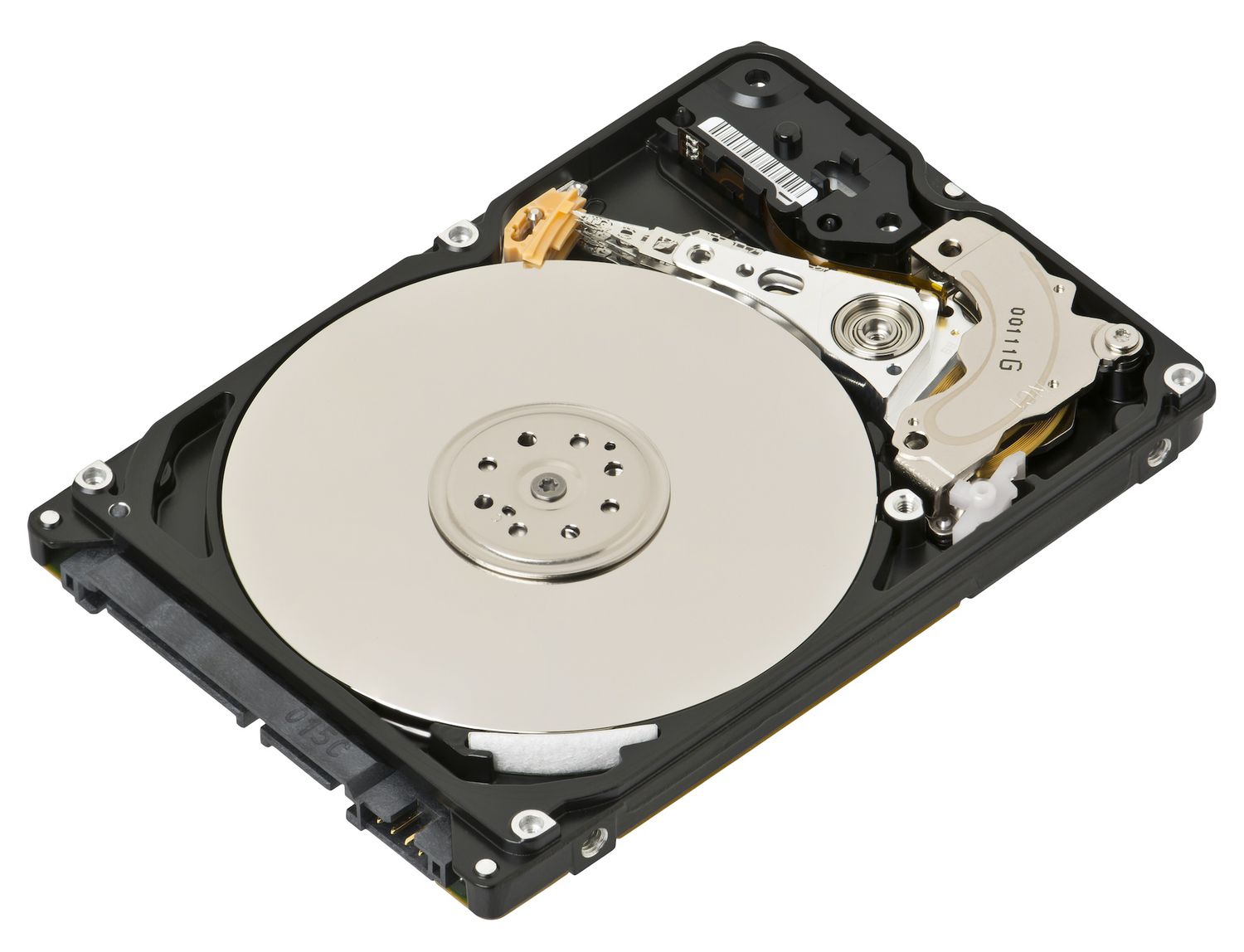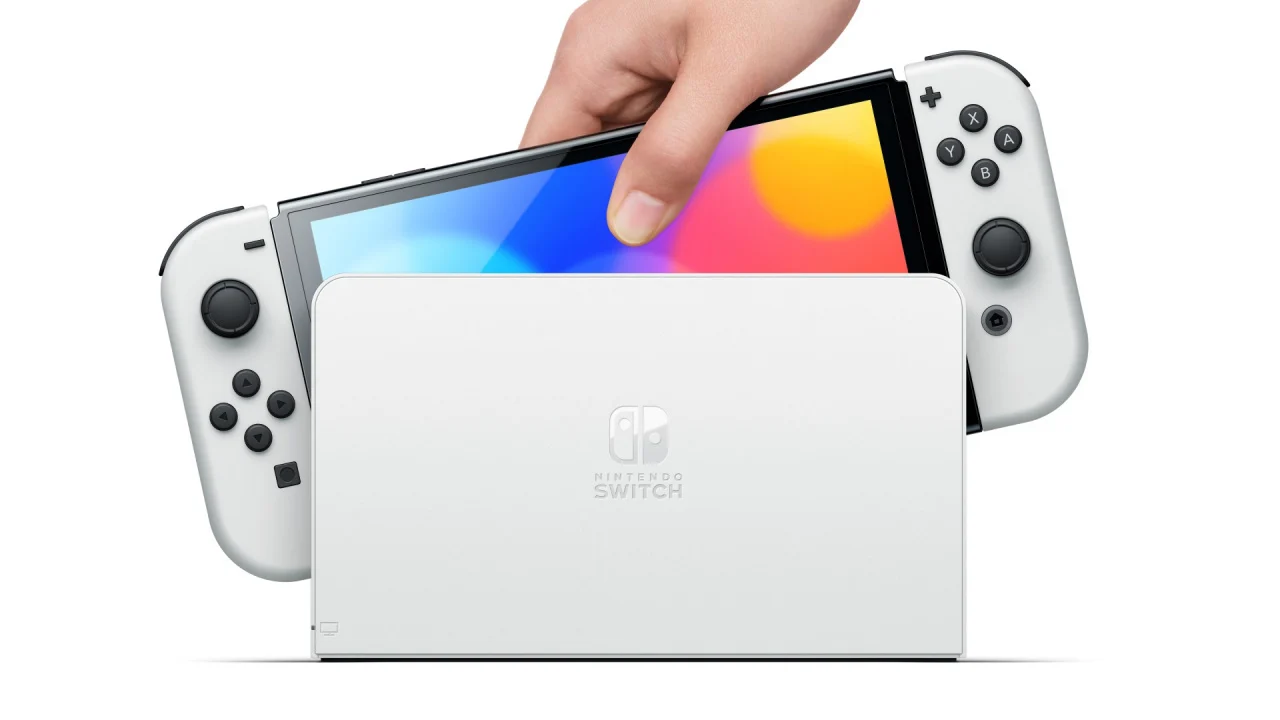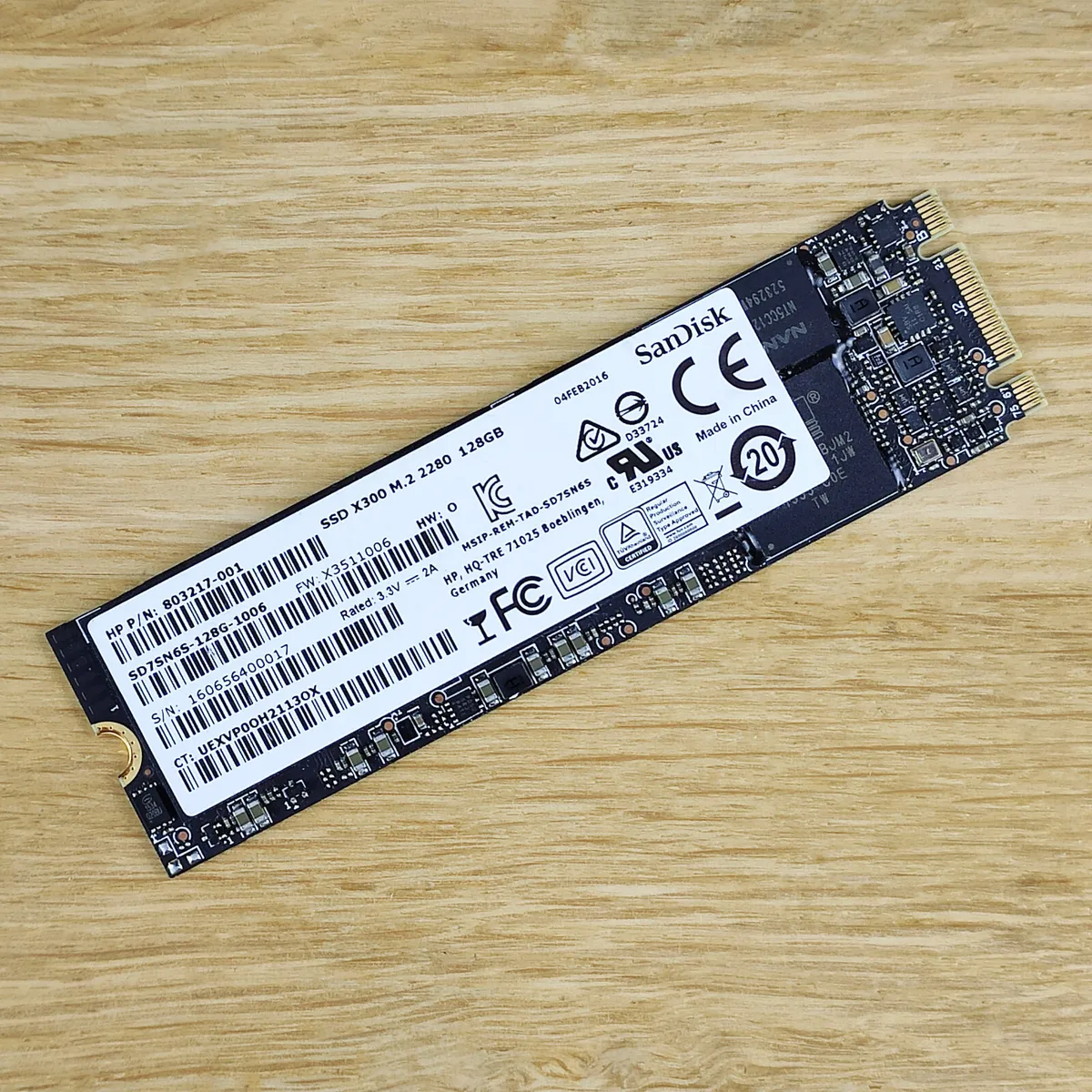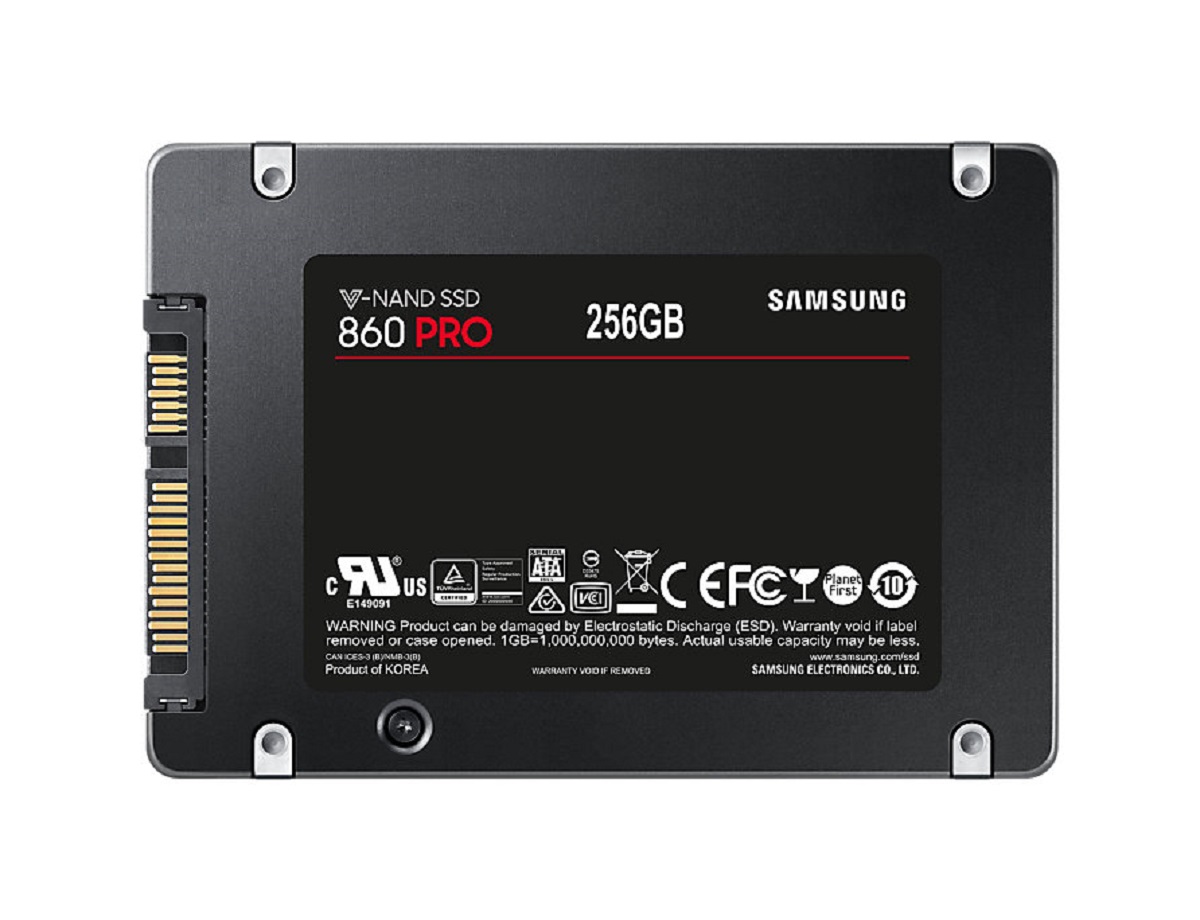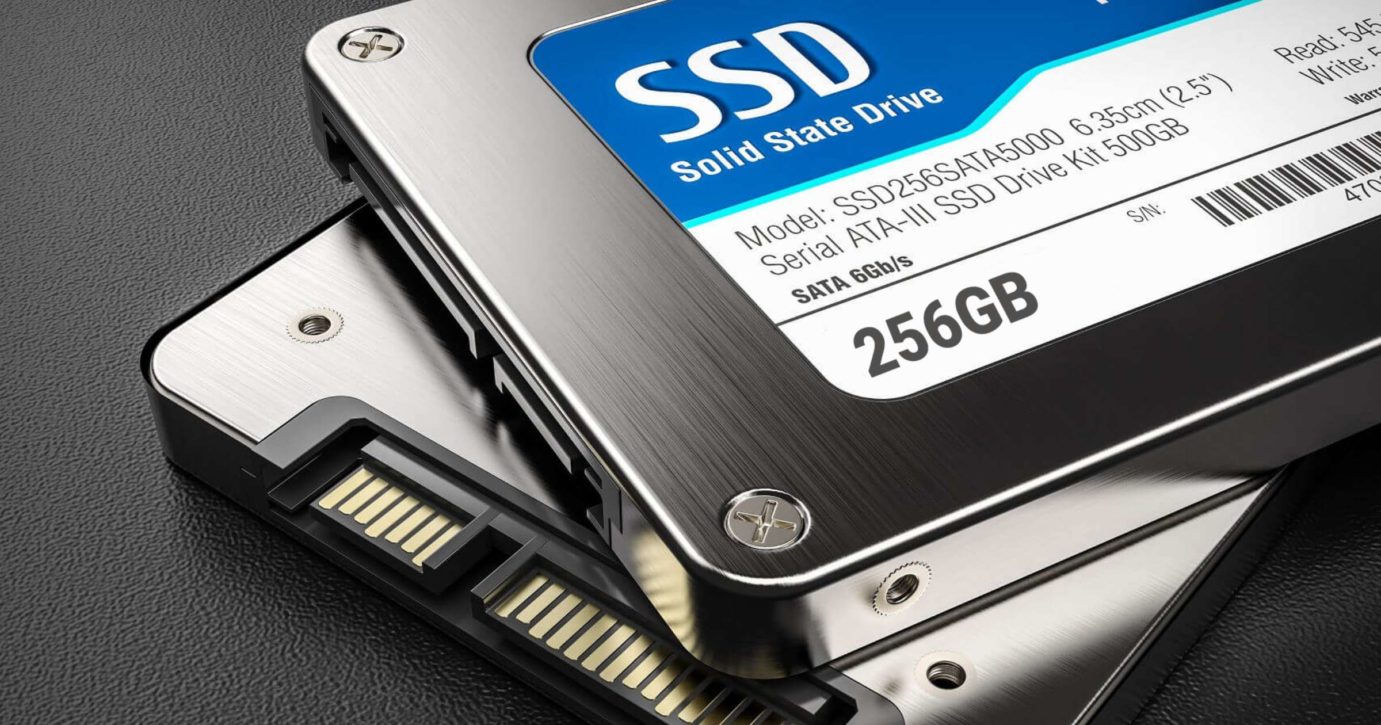Introduction
The use of Solid State Drives (SSDs) has become increasingly popular in recent years as a replacement for traditional hard disk drives (HDDs). The main advantage of SSDs is their speed and performance, which can greatly enhance the overall computing experience. However, a common question that arises when considering purchasing an SSD is: How many GB of storage do I need?
Determining the appropriate size of an SSD largely depends on several factors, such as the type of data you typically store, the operating system and software you use, and any specific requirements you may have, such as gaming or graphic design. It’s important to understand these factors to ensure that you choose the right amount of storage for your needs, avoiding wasted space or running out of storage too quickly.
In this article, we will discuss the various factors to consider when determining the appropriate GB size for an SSD. We will also explore different types of data, operating systems, and budget considerations that can help inform your decision. By the end of this article, you will have a clearer understanding of how to choose the ideal GB size for your SSD.
Understanding SSD Storage
Before we delve into determining the appropriate storage capacity for your SSD, it’s crucial to have a basic understanding of how SSD storage works. Unlike traditional HDDs, which utilize spinning disks and magnetic storage, SSDs employ NAND flash memory chips to store data. This technology allows for faster read and write speeds, resulting in improved performance and quicker access to data.
SSDs come in various storage capacities, typically ranging from 128GB to 4TB or more. The capacity you choose ultimately determines how much data you can store on the drive. However, it’s important to note that the usable storage space may be slightly less than the specified capacity due to formatting, file system overhead, and other factors.
Another critical aspect to consider is the difference between dynamic and static data storage. Dynamic data refers to files and programs that are frequently accessed and updated, such as operating systems, applications, and system files. On the other hand, static data consists of files that are relatively static, such as documents, photos, and videos.
Understanding the concept of static and dynamic data is crucial because dynamic data typically requires more storage space than static data. Therefore, it’s essential to allocate sufficient storage capacity to accommodate both types of data on your SSD.
In addition to these factors, it’s worth noting that SSDs have a limited lifespan in terms of how many times data can be written to the drive. This lifespan is measured in terabytes written (TBW), and it varies depending on the SSD’s make and model. However, for most users, the lifespan is more than sufficient, and SSDs generally outlast the useful life of the device they are installed in.
Now that we have a basic understanding of SSD storage, let’s explore the factors that can help determine the appropriate GB size for your SSD.
Factors to Consider
When deciding on the appropriate GB size for your SSD, there are several factors to consider. By evaluating these factors, you can ensure that you choose a storage capacity that meets your specific needs without overspending or running out of space prematurely.
Type of Data: The type of data you typically store on your computer plays a significant role in determining the required storage capacity. If you primarily work with text documents, spreadsheets, and emails, a lower storage capacity, such as 128GB or 256GB, might suffice. However, if you frequently work with multimedia files, such as photos, videos, and music, or if you engage in graphic design or video editing, a larger capacity, such as 512GB or 1TB, would be more appropriate.
Operating Systems and Software: The operating system and software applications installed on your computer also impact the storage requirements. Modern operating systems, such as Windows or macOS, require a certain amount of storage space to function optimally. Additionally, if you use resource-intensive software, such as video editing or CAD programs, you may need more storage capacity to accommodate temporary files and project files.
Multimedia Files: If you frequently store and work with multimedia files, particularly high-resolution photos, videos, and audio recordings, it’s crucial to consider their size and the volume of files you typically handle. For example, a single 4K video file can easily occupy several gigabytes of storage space. If you engage in extensive multimedia work, a larger SSD, such as 1TB or more, is recommended to avoid constant file management and potential storage limitations.
Gaming and Graphics: Gaming enthusiasts and graphic designers often require larger storage capacities due to the size of modern games and high-resolution graphics files. Games can range from a few gigabytes to over a hundred gigabytes in size, especially with frequent updates and additional content. Graphic designers working with large image files often benefit from ample storage space to store their work and maintain efficient file management.
Budget Considerations: While it’s tempting to opt for the highest storage capacity available, it’s essential to consider your budget. Higher-capacity SSDs tend to come with a higher price tag. Assess your needs and strike a balance between performance, storage capacity, and cost. It’s also worth considering whether you can expand your storage in the future if needed, as some SSDs support additional storage through expansion slots or external storage devices.
By carefully evaluating the type of data you work with, the operating system and software requirements, the volume of multimedia files, the demand for gaming or graphic design, and your budget constraints, you can make an informed decision about the ideal storage capacity for your SSD. Now, let’s delve into specific recommendations based on various scenarios and requirements.
Types of Data
To determine the appropriate storage capacity for your SSD, it’s important to consider the types of data you typically work with and store on your computer. Different types of data have varying storage requirements, and understanding these distinctions can help you make an informed decision.
Text Documents and Spreadsheets: If your primary usage involves working with text documents, such as Word files or PDFs, and spreadsheets, a lower storage capacity will likely suffice. These files tend to be relatively small in size, especially when compared to multimedia files, and can be easily managed with a storage capacity of 128GB or 256GB.
Photos and Images: If you’re an avid photographer or regularly work with high-resolution images, you’ll need a larger storage capacity. The size of digital photos can vary depending on factors like resolution and file format. Typically, a storage capacity of 512GB or higher is recommended to accommodate a significant collection of high-quality photos without running out of space quickly.
Videos: Video files can occupy a significant amount of storage space, especially if you’re working with high-resolution or 4K videos. The size of videos can vary greatly depending on factors such as duration, resolution, and compression. If you frequently work with videos or store a large video library, consider a storage capacity of 1TB or more to ensure you have ample space for your video projects.
Music and Audio Files: If you’re a music enthusiast or work with audio recordings, the size of your music library or audio files will impact your storage needs. While individual music files are typically small, accumulated over time, they can consume a considerable amount of storage space. A storage capacity of 256GB to 512GB is usually sufficient for most music enthusiasts, but if you have an extensive music library, consider a higher capacity.
Software and Applications: The storage capacity required for software and applications depends on the size and number of programs you use. Operating systems, design software, and gaming applications can often demand significant storage space, especially with frequent updates and installation of additional content. It’s advisable to allocate at least 256GB to 512GB for software and applications, ensuring smooth performance and sufficient space for future updates.
By analyzing the types of data you regularly work with and storing on your computer, you can determine the appropriate storage capacity for your SSD. Consider the size and volume of your documents, photos, videos, music, and software, and choose a storage capacity that allows for easy file management and future growth. The next section will provide specific recommendations based on different usage scenarios and requirements.
Operating Systems and Software
When determining the appropriate storage capacity for your SSD, it’s essential to consider the operating system and software applications you use on your computer. Different operating systems and software can vary in their storage requirements, and understanding these factors can help you make an informed decision.
Operating Systems: The operating system is the foundation of your computer’s functionality. Operating system files, updates, and temporary files require storage space to operate smoothly. Modern operating systems like Windows or macOS typically require several gigabytes of storage space for their installation. While the initial installation size may be relatively small, it’s advisable to allocate a larger storage capacity to account for future updates and expansions.
Productivity Software: Productivity software, such as word processors, spreadsheets, and presentation tools, is commonly used in various professional and academic settings. These applications, such as Microsoft Office or Google Workspace, require a certain amount of storage space to install and store user preferences, templates, and document history. Depending on the size and complexity of the software suite you use, allocating around 5-10GB of storage capacity would be sufficient in most cases.
Design and Creative Software: Graphic design, photo editing, and video editing software often demand substantial storage capacity due to their extensive functionality and resource-intensive nature. Applications like Adobe Creative Cloud or Final Cut Pro require significant storage space for installation, scratch disks, project files, and temporary files. It’s advisable to allocate at least 20-50GB or more of storage capacity for design and creative software, depending on your level of involvement and the size of your projects.
Gaming Applications: Gaming enthusiasts know that modern games can occupy a significant amount of storage space. Game sizes vary greatly depending on the title, but it’s not uncommon for games to require 50GB or more of storage space, especially with frequent updates and additional downloadable content (DLC). If gaming is a significant aspect of your computer usage, consider a storage capacity of 1TB or more to accommodate a sizable game library without constantly deleting and re-downloading games.
Virtual Machines and Development Environments: If you use virtual machines or development environments, it’s essential to allocate ample storage capacity for these environments as well. Virtual machines require storage space for the virtual hard disks, operating system images, and any additional software installed within the virtual environment. Similarly, development environments often involve multiple software tools and projects, which can add up to a substantial amount of storage space. Allocate additional storage capacity, depending on the size and complexity of your virtual machines and development projects.
By considering the storage requirements of your operating system and software applications, you can determine the appropriate storage capacity for your SSD. Adequate storage allocation ensures smooth performance, allows for future updates and expansions, and avoids running out of storage space prematurely. In the next section, we will explore how multimedia files impact your storage needs.
Multimedia Files
Multimedia files, such as photos, videos, and music, can significantly impact your storage requirements when determining the appropriate capacity for your SSD. These files tend to be larger in size compared to text documents or software installations, and it’s important to consider their volume and storage needs.
Photos: Whether you’re a photography enthusiast or capture pictures for personal use, high-resolution photos can take up a considerable amount of storage space. The size of photos varies depending on factors such as resolution, file format, and image complexity. RAW files from digital cameras or high-quality JPEG images can easily range from a few megabytes to several tens of megabytes or more. If you have a vast collection of photos, it’s advisable to opt for a larger storage capacity, such as 512GB or higher, to accommodate your growing collection.
Videos: Videos, especially those recorded in high-definition or 4K resolution, can quickly consume significant amounts of storage space. The size of videos depends on various factors, such as duration, resolution, frame rate, and compression settings. A single minute of high-quality video footage can easily occupy several hundred megabytes or more. If you frequently work with videos or have a collection of video files, consider a larger storage capacity, such as 1TB or more, to ensure you have sufficient space to store your videos without constant cleanup or deleting older files.
Music: If you’re an avid music lover or work with audio recordings, the size of your music library can impact your storage needs. While individual music files are usually small, the accumulated size of a vast music library can add up. Lossless audio formats, such as FLAC or WAV, generally require more storage space compared to compressed formats like MP3 or AAC. Typically, a storage capacity of 256GB to 512GB is sufficient for most music enthusiasts, allowing you to store a significant number of songs without worrying about running out of space.
Podcasts and Audiobooks: Podcasts and audiobooks have gained popularity in recent years, and they can also require a considerable amount of storage space if you regularly download and save these files. Similar to music files, the size of individual podcast episodes or audiobook files is relatively small, but the accumulated storage space can add up over time. Consider allocating additional storage capacity if you regularly save podcasts or audiobooks to ensure you have enough space for your entire collection.
By considering the size and volume of your multimedia files, you can determine the appropriate storage capacity for your SSD. Allocating sufficient storage ensures that you have ample space to store your photos, videos, music, and other multimedia files without constantly managing or deleting files. In the next section, we will explore how gaming and graphics-intensive tasks can impact your storage needs.
Gaming and Graphics
Gaming enthusiasts and professionals involved in graphic design and video editing often have specific storage requirements due to the demanding nature of their tasks. Whether you’re a passionate gamer or work with graphics-intensive applications, it’s crucial to consider the storage capacity needed for these activities.
Gaming: Modern games have become increasingly immersive and visually stunning, but they also require significant storage space. Game sizes can vary widely, with some titles exceeding 100GB or more, especially with frequent updates and downloadable content (DLC). If you’re an avid gamer with a growing collection of games, allocating a larger storage capacity is advisable to accommodate your entire library. A minimum storage capacity of 1TB is recommended for gamers, but if your budget allows, opting for a larger capacity, such as 2TB, can provide ample space for your gaming needs without worries of running out of storage space.
Graphic Design and Video Editing: Graphic design and video editing projects involve large files, often with high resolutions and multiple layers. Design software, such as Adobe Creative Cloud or CorelDRAW, and video editing software, like Adobe Premiere Pro or Final Cut Pro, require substantial storage space to store project files, render previews, and manage temporary files. Depending on the complexity and size of your projects, it’s advisable to allocate a larger storage capacity, such as 1TB or more, to ensure smooth workflow and efficient file management.
3D Modeling and Animation: If you’re involved in 3D modeling, animation, or rendering, your storage requirements can be even greater. These tasks involve intricate models, high-resolution textures, and rendering multiple frames for animation or visual effects. Depending on the complexity and duration of your projects, allocating additional storage capacity, such as 2TB or more, may be necessary to accommodate the large project files, temporary cache files, and rendered output.
By considering the specific storage needs of gaming and graphics-intensive tasks, you can determine the appropriate capacity for your SSD. Allocating sufficient storage ensures that you have ample space to store your games, design projects, and multimedia assets without compromising performance or constantly juggling files. In the next section, we will explore budget considerations to help you make a well-informed decision about the storage capacity of your SSD.
Budget Considerations
When determining the appropriate storage capacity for your SSD, it’s crucial to factor in your budget. The cost of SSDs typically increases with higher storage capacities, and it’s important to strike a balance between your storage needs and your available funds.
Assess Your Needs: Start by assessing your storage needs based on the factors we’ve discussed earlier, such as the types of data you work with, the size of your multimedia files, and any gaming or graphics-intensive tasks. Consider how much storage space you currently require and estimate how much you might need in the future. This evaluation will give you a rough estimate of the minimum storage capacity you should consider.
Performance vs. Storage: While having a larger storage capacity can be beneficial, it’s important to remember that SSDs offer improvements in speed and performance compared to traditional HDDs. If your budget is limited, you may need to prioritize performance over storage capacity. Opting for a smaller SSD with faster read and write speeds can provide a smoother computing experience, even if you need to manage your storage space more carefully.
Future Expansion: Consider whether your SSD allows for expansion. Some models come with additional storage slots or support for external storage devices. If you anticipate needing more storage in the future, choosing an SSD that offers expansion options can provide flexibility without having to invest in a larger capacity SSD right away.
Price per GB: Compare prices across various SSD models and storage capacities to determine the cost per gigabyte (GB). Sometimes, higher-capacity SSDs may have a lower price per GB, making them more cost-effective in the long run. However, don’t overlook the fact that you may not need that much storage. It’s all about finding a balance between cost and the amount of storage you actually require.
Consider Trusted Brands: When it comes to SSDs, choosing trusted brands known for reliability and performance is crucial. Choose a reputable manufacturer that offers good warranty coverage and has positive customer reviews. While some lesser-known brands may offer lower prices, it’s important to weigh that against the potential risks of lower quality and reliability.
By evaluating your needs, considering the trade-offs between performance and storage, exploring expansion options, comparing prices per GB, and choosing trusted brands, you can make an informed decision about the storage capacity of your SSD that aligns with your budget. In the next section, we will provide some specific recommendations based on different usage scenarios and requirements.
Recommendations
Based on the factors we have discussed, here are some recommendations for choosing the appropriate storage capacity for your SSD:
General Use: If you primarily use your computer for everyday tasks like web browsing, email, and document editing, a storage capacity of 256GB to 512GB should be sufficient. This will provide ample space for your operating system, software applications, and a reasonable amount of personal files.
Multimedia Enthusiast: If you frequently work with high-resolution photos, videos, and music, consider a larger storage capacity of 512GB to 1TB. This will provide enough space for your multimedia files, as well as your operating system, software, and additional personal files.
Gaming and Graphics: Gaming enthusiasts and professionals working with graphics-intensive tasks should opt for larger storage capacities. A minimum of 1TB is recommended for gamers, as modern games can be quite large, and a larger SSD will allow you to store a significant library without constant file management. Similarly, graphics professionals should consider 1TB or more to accommodate their projects and files.
Power User: If you engage in a combination of gaming, multimedia work, and other resource-intensive tasks, consider a storage capacity of 1TB to 2TB. This will provide ample space for your various activities and future growth, ensuring optimal performance without running out of storage space quickly.
Budget-Conscious: If you’re on a tight budget, but still want the benefits of an SSD, consider a smaller storage capacity of 128GB to 256GB. This will allow for a snappy and responsive computing experience, but you may need to manage your storage more carefully and utilize external storage solutions for additional space.
Remember, these recommendations are general guidelines, and the actual storage capacity you need may vary based on your specific usage patterns, file sizes, and future storage requirements. It’s crucial to evaluate your unique needs and choose a capacity that provides a balance between storage space, performance, and budget.
Lastly, always ensure that you leave some free space on your SSD to maintain optimal performance. It’s recommended to keep at least 10-20% of the total capacity free to allow for efficient wear leveling and garbage collection algorithms used by the SSD controller.
By considering your specific requirements and following these recommendations, you can select the appropriate storage capacity for your SSD that will meet your needs and deliver an enhanced computing experience.
Conclusion
Choosing the right storage capacity for your Solid State Drive (SSD) is essential to ensure optimal performance, efficient file management, and sufficient space for your data. By considering factors such as the type of data you work with, the requirements of your operating system and software, the size of your multimedia files, and any gaming or graphics-intensive tasks, you can make an informed decision about the ideal storage capacity for your needs.
For general users, a storage capacity of 256GB to 512GB should suffice, providing space for your operating system, software, and personal files. If you heavily engage with multimedia files or work on graphic design or video editing, consider a larger capacity of 512GB to 1TB. Gaming enthusiasts and professionals in graphics-intensive fields should aim for 1TB or more to accommodate their extensive libraries and projects.
It’s important to ensure that your chosen storage capacity aligns with your budget. Evaluate your needs, strike a balance between performance and storage, and consider expansion options if necessary. Compare prices per GB and choose reputable brands known for reliability and performance to make the most cost-effective choice.
Lastly, keep in mind the importance of leaving some free space on your SSD to maintain its performance and longevity. Aim to keep at least 10-20% of the total capacity free for efficient wear leveling and garbage collection.
By carefully considering these factors and recommendations, you can confidently choose the appropriate storage capacity for your SSD, ensuring a smooth and efficient computing experience while effectively managing your data. Embrace the speed and performance benefits that SSDs offer, knowing that you have the space necessary to store all your important files and enjoy a seamless digital experience.









